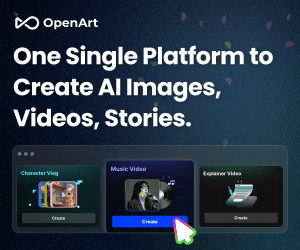Businesses are constantly vying for attention in an increasingly crowded marketplace. Amidst the cacophony of advertising and marketing messages, content marketing stands out as a powerful tool for building brand awareness, generating leads, and driving sales.
But what exactly is content marketing? How does it work? And how can businesses effectively utilize this strategy to achieve their goals? Let’s delve into the world of content marketing and explore its transformative potential.
Introduction: Unveiling the Essence of Content Marketing
Content marketing is an inbound marketing strategy that focuses on creating and distributing valuable, relevant, and consistent content to attract and retain a clearly defined audience — and, ultimately, to drive profitable customer action.
II. Understanding Content: A Realm of Diverse Forms
Content encompasses a broad spectrum of digital assets, each serving a unique purpose in captivating audiences and achieving marketing objectives.
A. The Essence of Valuable Content
Value is the cornerstone of effective content marketing. Content should be insightful, informative, and genuinely useful to the target audience. It should address their pain points, provide solutions to their problems, and offer valuable perspectives on their interests.
B. A Tapestry of Content Forms
Content takes on various forms, from traditional text-based formats like blog posts and articles to engaging visual mediums such as infographics, videos, and podcasts. Businesses can experiment with different content types to discover what resonates best with their audience.
C. Tailoring Content to Your Audience
Content should be tailored to the specific needs and preferences of your target audience. Understanding their demographics, interests, and online behaviour is essential for creating content that resonates with them.
III. Crafting a Content Marketing Strategy: A Blueprint for Success
A well-defined content marketing strategy serves as a roadmap for achieving your content marketing goals. It outlines the objectives, target audience, content pillars, distribution channels, and measurement metrics.
A. Setting Clear Goals
Define specific and measurable goals for your content marketing efforts. Are you aiming to increase website traffic, generate leads, or boost sales? Having clear objectives will help you measure the success of your strategy.
B. Understanding Your Target Audience
Delve into the demographics, interests, and online behaviour of your target audience. This will help you tailor your content to their specific needs and preferences, ensuring maximum relevance and engagement.
C. Identifying Content Pillars
Establish core content pillars that align with your business goals and audience interests. These pillars will form the foundation for your content creation efforts.
D. Selecting Distribution Channels
Identify the most effective channels for reaching your target audience. Leverage social media platforms, email marketing, search engine optimization (SEO), and other relevant channels to distribute your content.
E. Implementing Analytics and Measurement
Track key performance indicators (KPIs) to measure the success of your content marketing strategy. Analyze metrics such as website traffic, social media engagement, lead generation, and sales.
IV. Creating Captivating Content: The Art of Engagement
High-quality content is the lifeblood of successful content marketing. It should be informative, engaging, and visually appealing to capture the attention of your audience.
A. Embracing Storytelling
Infuse your content with storytelling elements to connect with your audience on an emotional level. Stories create a sense of relatability and make content more memorable.
B. Utilizing Visuals Effectively
Enhance your content with captivating visuals such as infographics, images, and videos. Visuals can break up text, improve comprehension, and make content more engaging.
C. Crafting Clear and Concise Language
Use clear, concise language that is easy for your audience to understand. Avoid jargon and complex terminology that might deter them from engaging with your content.
V. Distributing and Promoting Your Content: Amplifying Your Reach
Effective distribution of your content is crucial for maximizing its impact and reaching a wider audience. Utilize various channels to amplify your content's visibility.
A. Leveraging Social Media
Share your content on social media platforms like Facebook, Instagram, and Twitter to reach a broader audience. Engage with your followers by responding to comments and participating in relevant conversations.
B. Harnessing Email Marketing
Build an email list and nurture it with valuable content. Segment your email list to send targeted messages based on audience interests and preferences.
C. Mastering Search Engine Optimization
search engine optimization (SEO) has become an indispensable tool for businesses seeking to enhance their online visibility and drive organic traffic to their websites. SEO involves optimizing website content and structure to rank higher in search engine results pages (SERPs), increasing the likelihood that users will find a website when searching for relevant keywords.
VI. Measuring Content Marketing Success: Gauging ROI
Regularly measuring the results of your content marketing efforts is essential for ensuring the effectiveness of your strategy. Analyze key metrics to track progress and identify areas for improvement.
A. Tracking Website Traffic and Engagement
Monitor website traffic and engagement metrics such as page views, bounce rate, and social media shares to assess the reach and impact of your content.
B. Evaluating Lead Generation and Conversion Rates
Track lead generation and conversion rates to measure the effectiveness of your content in driving business opportunities.
C. Assessing Brand Awareness and Sentiment
Monitor brand awareness and sentiment by analyzing social media mentions, online reviews, and overall brand perception.
VII. Content Marketing Tips for Enhanced Effectiveness
Here are some actionable tips for maximizing the effectiveness of your content marketing strategy:
A. Niche Down and Target a Specific Audience
Focus on a specific niche or target audience to tailor your content specifically to their needs and interests.
B. Produce Consistent and Regular Content
Establish a consistent content publishing schedule to maintain audience engagement and ensure visibility in search results.
C. Experiment with Diverse Content Formats
Explore and experiment with various content formats to discover what resonates best with your audience.
D. Optimize for Search Engines (SEO)
Incorporate relevant keywords and optimize your content for search engines to improve visibility in organic search results.
E. Collaborate with Influencers
Partner with relevant influencers in your industry to expand your reach and enhance credibility.
F. Analyze and Adapt Based on Data
Regularly analyze content performance metrics and adapt your strategy based on data insights to improve results.
Ending
Content marketing is not a one-size-fits-all approach; it requires continuous adaptation and refinement to suit the ever-changing digital landscape. By embracing the principles and practices of content marketing, businesses can establish themselves as thought leaders, attract a loyal customer base, and achieve sustainable growth.
Questions and Answers
1. What are the key differences between content marketing and inbound marketing?
Content marketing is a subset of inbound marketing. Inbound marketing focuses on attracting and engaging customers through valuable content, while content marketing is the strategy and execution of creating and distributing that content.
2. How long does it take to see results from content marketing?
Content marketing is a long-term investment, and results can vary depending on factors such as industry, target audience, and content quality. However, with consistent effort and a well-defined strategy, businesses can typically expect to see positive results within 6-12 months.
3. What are some essential tools for content marketing?
A variety of tools can aid in content marketing efforts, including:
• Content management systems (CMS) like WordPress or Drupal for managing and publishing content
• Social media management tools like Hootsuite or Buffer for scheduling and sharing content on social platforms
• Email marketing tools like MailChimp or Constant Contact for creating and sending email campaigns
• Analytics tools like Google Analytics or Adobe Analytics for tracking website traffic and content performance
• Content creation tools like Canva or Hemingway Editor for designing visuals and improving writing
4. How can I measure the return on investment (ROI) of content marketing?
Measuring the ROI of content marketing requires tracking relevant metrics and analyzing the impact of content on business goals. Common metrics include:
• Website traffic and engagement
• Lead generation and conversion rates
• Customer acquisition costs and lifetime value
• Brand awareness and sentiment
5. What are some effective strategies for improving content marketing results?
To enhance content marketing effectiveness, consider these strategies:
• Develop a deep understanding of your target audience's needs, interests, and pain points
.Create high-quality, informative, and engaging content that resonates with your audience
• Promote your content actively across multiple channels, including social media, email, and search engines
• Regularly analyze content performance and make adjustments based on data
• Stay up-to-date with content marketing trends and best practices
In conclusion, content marketing is a powerful tool for businesses of all sizes to achieve their marketing goals. By creating and distributing valuable, relevant, and consistent content, businesses can attract and retain customers, generate leads, and drive sales. By following the tips in this guide, businesses can create a content marketing strategy that drives results.
LATEST BLOG POSTS
© businesshub360.systeme.io
All rights reserved



